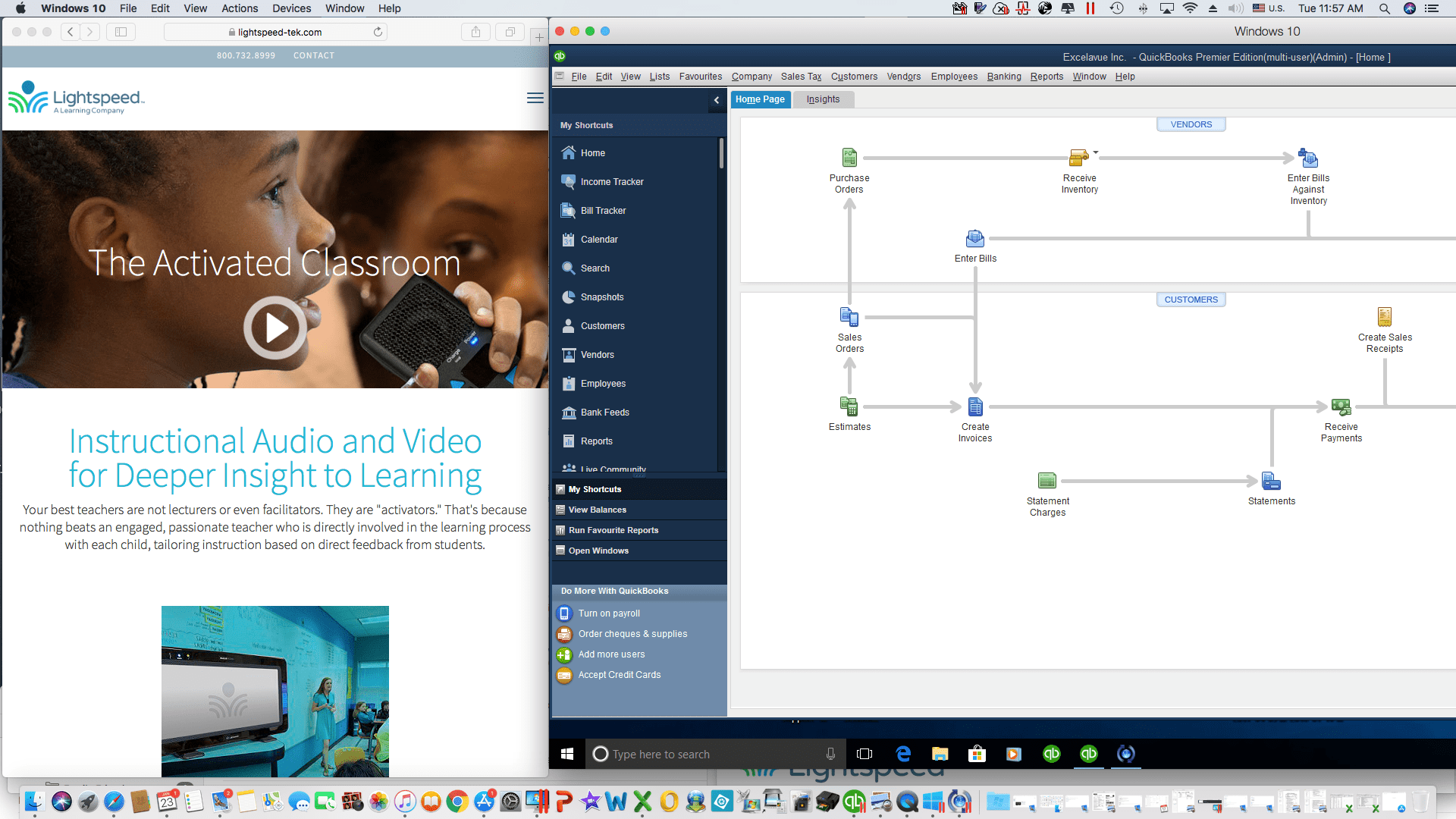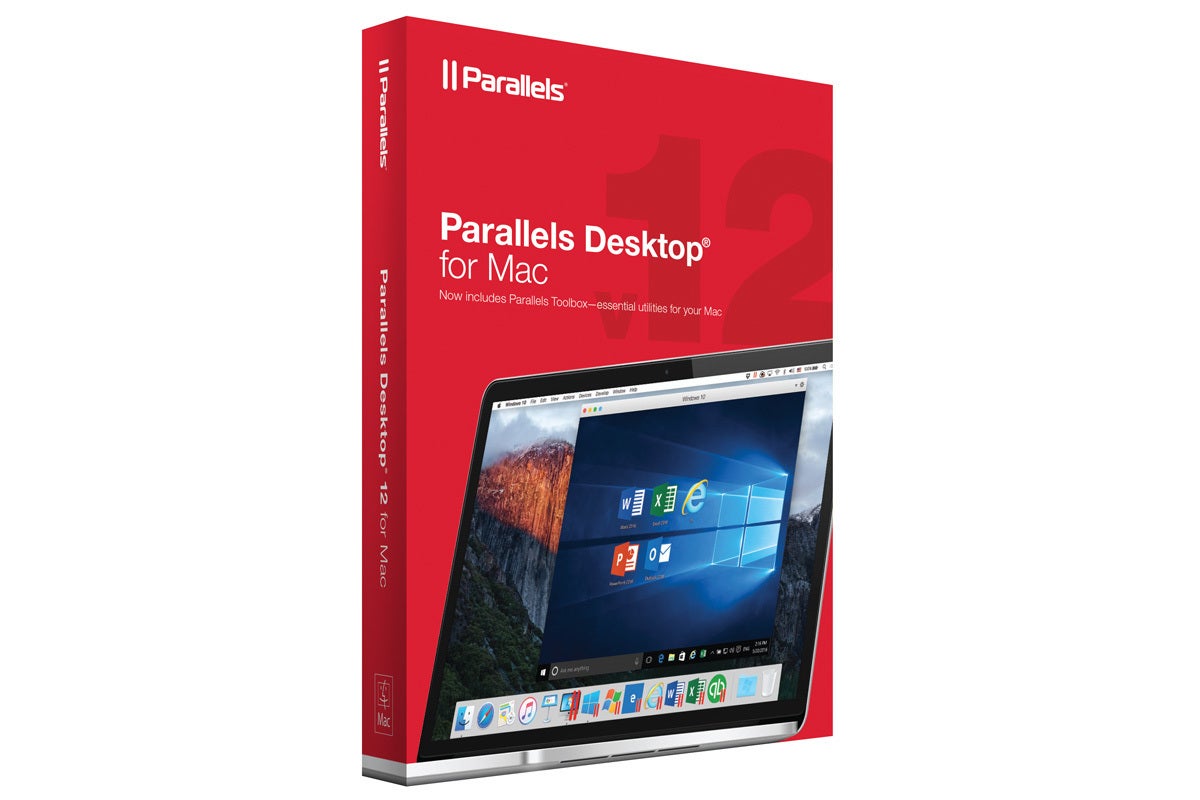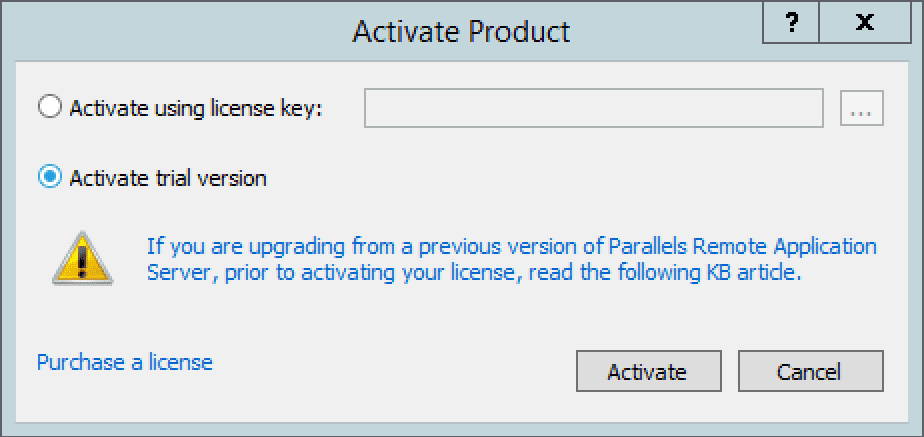I'm using Parallels for Mac and Quickbooks Premier 06. When I try to save an invoice as a pdf, it crashes Quickbooks. If I try to print an invoice, it jumbles the information and prints out a blank document. Parallels has announced the release of Parallels Desktop 14 for Mac, an update to their virtualization software that allows users to run Windows and other operating systems on their Mac. Parallels Desktop 14 is compatible with both macOS Mojave and the latest version of Windows 10. QuickBooks Payroll for Mac is an online payroll service that integrates with (but does not require) QuickBooks for Mac 2006 and later. QuickBooks Payroll for Mac supports Safari v3.1 and later and Firefox v2.0 or later. May 12, 2018 A Mac business tech a few years ago said that for our Mac environment with QB running on Parallels (QB does not offer Apple simultaneous user licenses). A Mac business tech a few years ago said that for our Mac environment with QB running on Parallels (QB does not offer Apple simultaneous user licenses).
Parallels has announced the release of Parallels Desktop 14 for Mac, an update to their virtualization software that allows users to run Windows and other operating systems on their Mac.
Parallels Desktop 14 is compatible with both macOS Mojave and the latest version of Windows 10. Mojave can run as both a host and guest operating system, allowing users to test the latest version of macOS with no risk of losing data in their everyday machine.
Version 14 offers enhanced storage optimization, offering optimized storage of virtual disk images. A new “Free Up Disk Space” feature better handles multiple virtual machines, and new snapshots will occupy up to 15% less disk space than in previous versions.
Parallels Desktop 14 now allows the use of Microsoft Ink to edit Microsoft Office for Windows documents on a Mac, including pressure-sensitive support in applications such as PowerPoint, Microsoft Edge, CorelDRAW, Fresh Paint, Leonardo, openCanvas and Photoshop for Windows.
MacBook Pro Touch Bar support has been added for Microsoft Visio and OneNote, SketchUp, AutoCAD, Revit, Quicken, QuickBooks and Visual Studio. They join current Parallels Desktop Touch Bar sets for Windows applications, including: Office 2016 (Microsoft Word, Excel, PowerPoint, and Outlook), Windows Start Menu and desktop (Cortana, Task View and Task Bar pinned elements), File Explorer (File Open and Save As settings), and web browsers (Internet Explorer, Microsoft Edge, Google Chrome, Mozilla Firefox, Opera and Vivaldi).
A Touch Bar Wizard allows users to customize the Touch Bar for thousands of Windows apps, allowing users to have their function key shortcuts are at their fingertips when using the applications.

With the public release of macOS Mojave, Parallels Desktop 14 will support DarkMode. Quick Look issued on Windows files now shows quick actions. Support for other Mojave features are on the way and will be introduced following the public release of Mojave.
Parallels Desktop 14 or Mac, Parallels Desktop 14 for Mac Pro Edition and Parallels Desktop for Mac Business Edition are available for subscribers and upgraders from Parallels Desktop version 12 and 13. New customers can download a 14-day full featured trial version or purchase the software from the Parallels website.
The recommended retail price (RRP) of Parallels Desktop 14 for Mac is US$79.99 for an annual subscription or US$99.99 for a perpetual license. Parallels Desktop for Mac Pro Edition and Business Edition are each available to new customers for US$99.99 per year. Parallels Desktop 12 and 13 perpetual license customers can upgrade to Parallels Desktop 14 for US$49.99, or upgrade to a Parallels Desktop for Mac Pro Edition subscription for US$49.99 per year.
QuickBooks, Finally
Okay, now you have a Virtual Machine (VM) all set up. Think of it as a Windows computer that actually co-exists happily with a Mac, much better than it does in the “real” world, actually. You are ready to install QuickBooks and get working.

First a brief note: Intuit does not officially support running QuickBooks in a virtual environment. That doesn’t mean you shouldn’t do it. It just means they won’t help you with the complexities of your virtual machine environment. The exact quote from Intuit is actually:
“Please be aware that Intuit has not tested, nor do we support, the use of a QuickBooks for Windows product on the above mentioned PC emulators. We encourage you to research this approach to see whether it will work for you”
And here you are, researching! If you have an problem with QuickBooks itself, and you need to call support, they will help you. Just keep the little issue about the virtual machine to yourself. 🙂 All the support line needs to know is your OS (the Windows one, probably Windows 7 if you’ve been following my directions), and the version of QuickBooks. If your issue is with networking or printing or finding your files, well, that’s why I’m writing this blog post. Its unrealistic to expect Intuit support personnel to be able to deal with all the various possible configurations of software and hardware, let alone throwing the permutations of virtual machines into the mix. So you will have to look for help elsewhere – like here!
Installing QuickBooks
You can install QuickBooks from a CD, but unless you have an excruciatingly slow internet connection, I recommend downloading it. You’ll have the latest revision of the software, which will eliminate needing to update it as soon as you’ve installed it. Plus, you won’t have to deal with the complexities of having Parallels decide where to mount the CD drive. Open your browser of choice inside your Windows computer – (see part I), and then check for the version you need here: QuickBooks Downloads . You’ll still need the license key and product information, which is either on the cardboard folder that came with your disk or if you purchased a Download version, on an email from Intuit or whoever you purchased it from.
I recommend letting QuickBooks install itself to the default location, which is C:Program FilesIntuit. You avoid some potential issues down the road, if QB knows where to look for all its “parts”. Note that you will probably want to uncheck the box that says “Install Service and Support icons”, because these may show up on your Mac desktop as well, depending on how you have configured Parallels. (Besides, I really have an issue with software, any software, throwing its icons all over my desktop – it clutters my pictures of the beach)
Parallel's For Mac
Single-User Files Stored on Local Machine
I recommend you create a directory inside your Windows computer to store the file. Depending on how you set up Parallels, the My documents folder in Windows may be mapped to your Mac Documents folder. While this is useful for a lot of things, you’ll get better results from QuickBooks, and make it easier to use third party programs and get support if you store your file in C:Documents and SettingsYour User NameYourCompanyName_QB(or something like that).

Conversely I recommend saving your backup to a folder on the Mac side. This gives you the ability to get back up to speed quickly if you need to trash your virtual machine for any reason. (Remember all those issues with Windows that drove you to Mac in the first place? That’s the beauty of Virtual machines, just throw them away and start over if they get cranky)
Networking QuickBooks on Parallels
Quickbooks Support For Mac
The first requirement is to make sure that you are connecting across a wired network. I don’t support QuickBooks on wireless networks; it’s just not a good environment for QB (or probably any program that runs on a database) Your data file will almost certainly be corrupted as the wireless connection inevitably drops just as some bit is wafting its way from the local machine to the server.
If QB is hosted on a Windows server:
First make sure you can connect to the Windows computer, by going to the Network and Sharing control panel. If you can’t see the computer here, you will have to do some troubleshooting before worrying about QuickBooks. If the hosting machine is listed, make sure that you can access the QuickBooks file, by drilling down on the Windows computer. Setting up sharing on a Windows machine depends on the Windows OS (XP, Vista, W7) and the version (Home, Professional, Ultimate) and I could write another couple of articles about just that. If you don’t have an IT professional to turn to, here are some resources to help with Windows file sharing:
If QB is hosted on another Mac running Parallels:
The hosting Mac is going to need to have its Parallels Network setting (Virtual Machine>Configure>Hardware>Network>Ethernet) set to Bridge Networking. This will give the “Windows machine” on the Mac its own IP address and MAC (not Mac) identity on the network. The default Parallels setting is to Shared Networking, where the Virtual Machine shares the Mac network connection, and is assigned an IP address by Parallels that is not on the same subnet as the Mac. This is safer, but it won’t let other users easily access any files stored on this machine. So if you are going to use Bridge networking, you should also make sure to enable the firewall on the Windows 7 “machine”.
The Virtual Machine hosting QuickBooks needs to have QuickBooks located on the “C” drive. This is so the QuickBooks Database Manager can find the program. QB Database Mgr will not scan “remote drives”, which your Mac “side” imitates. This is one reason why I said earlier to save your file to the C drive.
Again, you will want to make sure that the remote installation of Windows can “see” the hosting “machine” before attempting to connect to a remote file. QuickBooks needs a number of ports open on the firewalls of both computers for its networking to operate. Check the support site here for a list of the ports applicable to your version and year of QB. You can also use the QB Network Diagnostic Tool to help you figure out what the issue might be.
Once the computers, virtual or real, can access each other, and the firewalls are properly configured, it should be a simple matter of making sure the Hosting computer is set to Hosting Multi-user Access mode, and the Folder containing QB is shared. Then you should be able to navigate to the QB data file and open it from your client computer.
Hopefully this gives you some confidence that using QuickBooks for Windows in a virtual environment is easy to set up and easy to run. And its a great option for anyone, like me, who loves the Mac but can’t live without the extra features of QB for Windows.